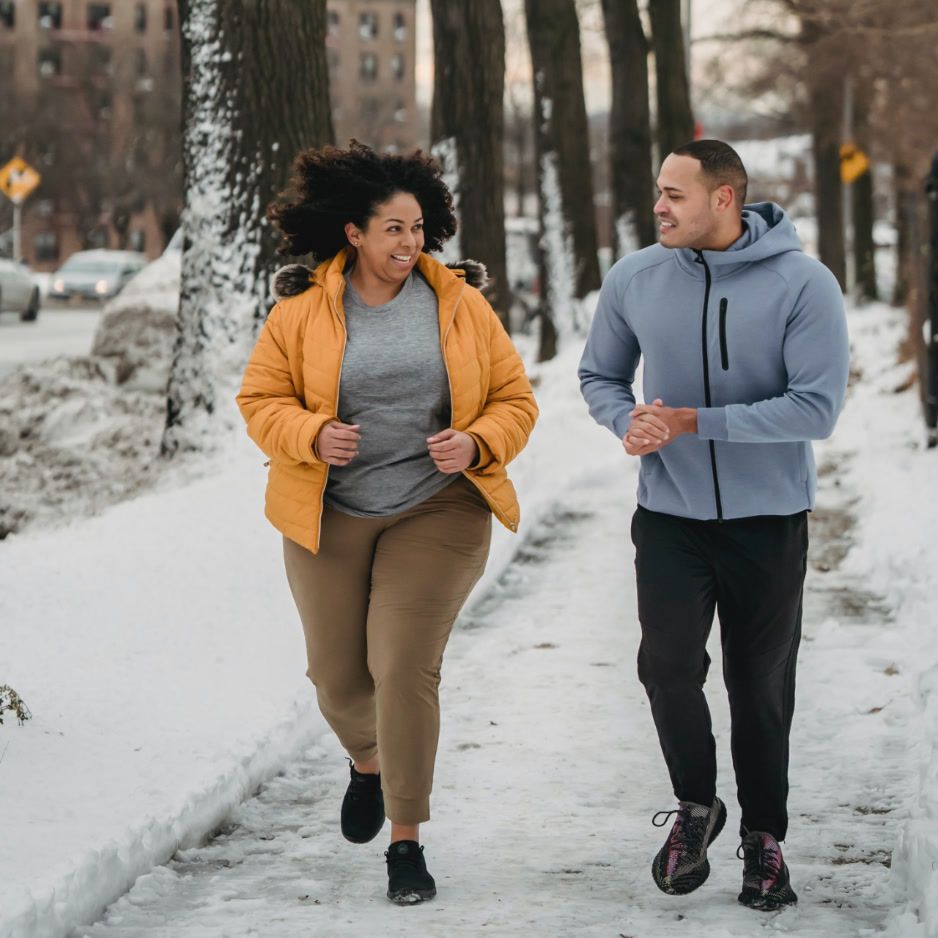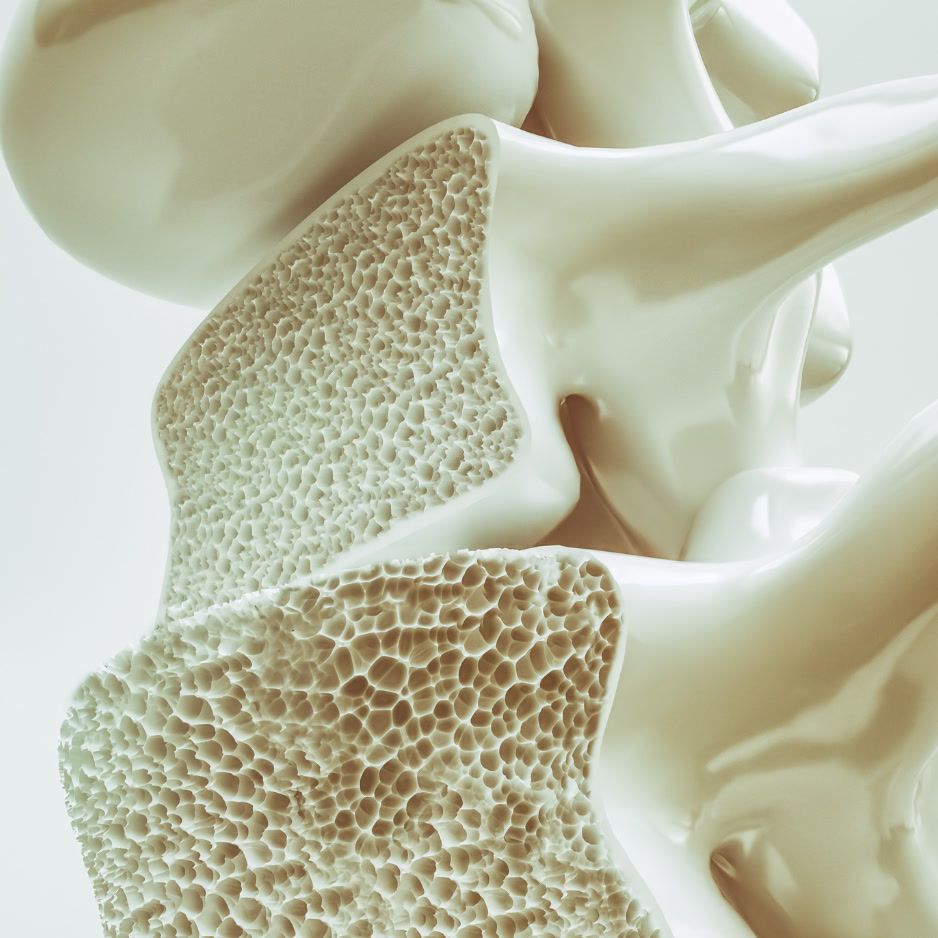The Ultimate Guide to Rucking: Benefits and Beginner Plan
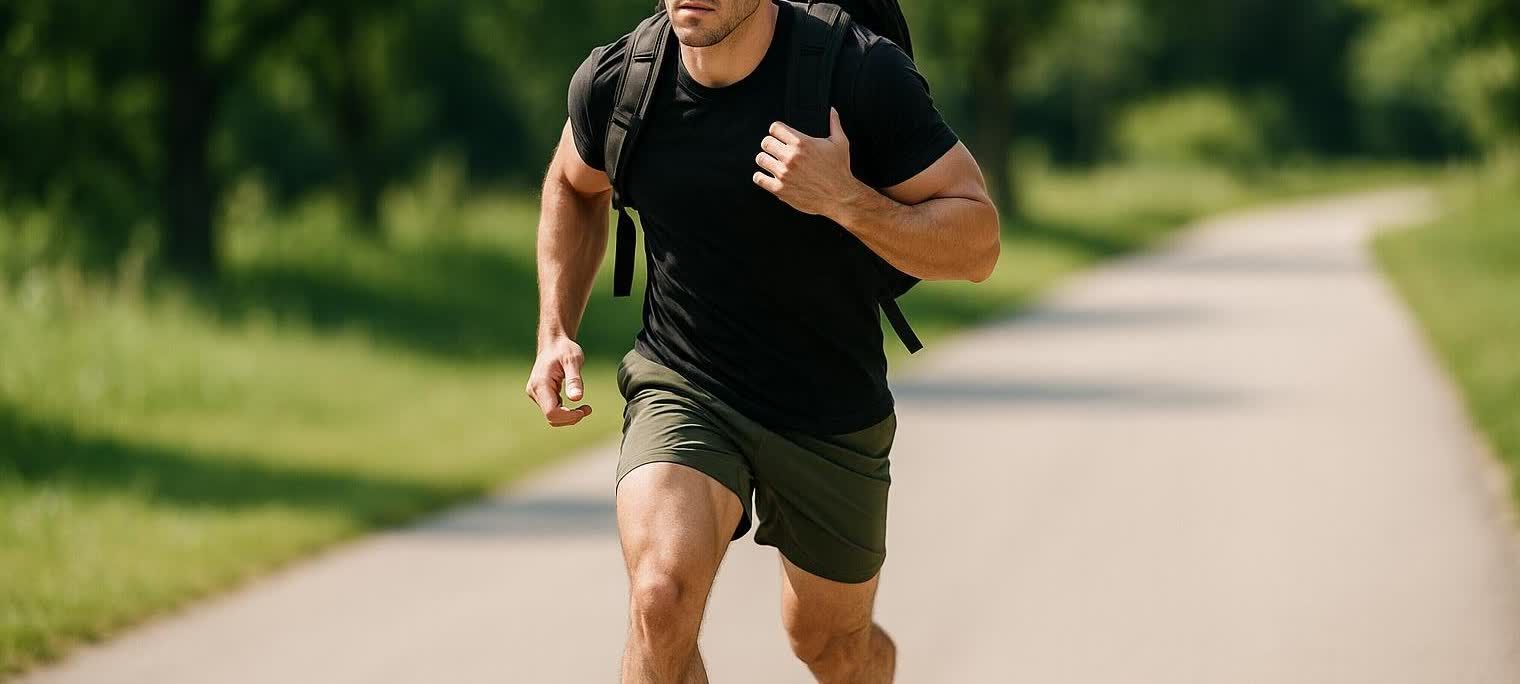
The Ultimate Guide to Rucking: Benefits, Gear Essentials, and a Step-by-Step Beginner Plan
Rucking—walking with a weighted backpack—turns an everyday stroll into an effective lower-body and core workout that strengthens your postural muscles. The best part? You can start today with a pack you already own and a couple of household items for weight. No gym membership, treadmills, or high-tech gadgets required.
In this guide, discover the essentials of rucking. You’ll learn:
- What rucking is and why it’s easy to begin
- Evidence-backed health benefits (from calorie burn to bone density)
- Exactly how much weight to carry and when to add more
- A 4-week beginner plan you can start tomorrow
- How to track progress—including advanced tools like DEXA scans
What Is Rucking?

Rucking is simply walking for distance or time while carrying weight in a backpack or weighted vest. The practice evolved from military “loaded marches,” where soldiers cover 6–15 miles with 35-plus pounds to build field endurance. For civilians, that translates into an inexpensive, joint-friendly way to level-up a regular walk. Anyone with health concerns should consult a doctor before starting.
Why Rucking Is Worth Your Time (and Easy to Scale)
1. Minimal Barrier to Entry
If you have a backpack and something heavy—water bottles, books, canned food—you’re good to go. Add or remove items and you’ve instantly changed the workout’s difficulty.

2. Burns More Calories Than Walking
Adding load significantly increases energy expenditure. Field data from the GORUCK Calorie Calculator show rucking can burn 2–3× the calories of unweighted walking at the same pace.
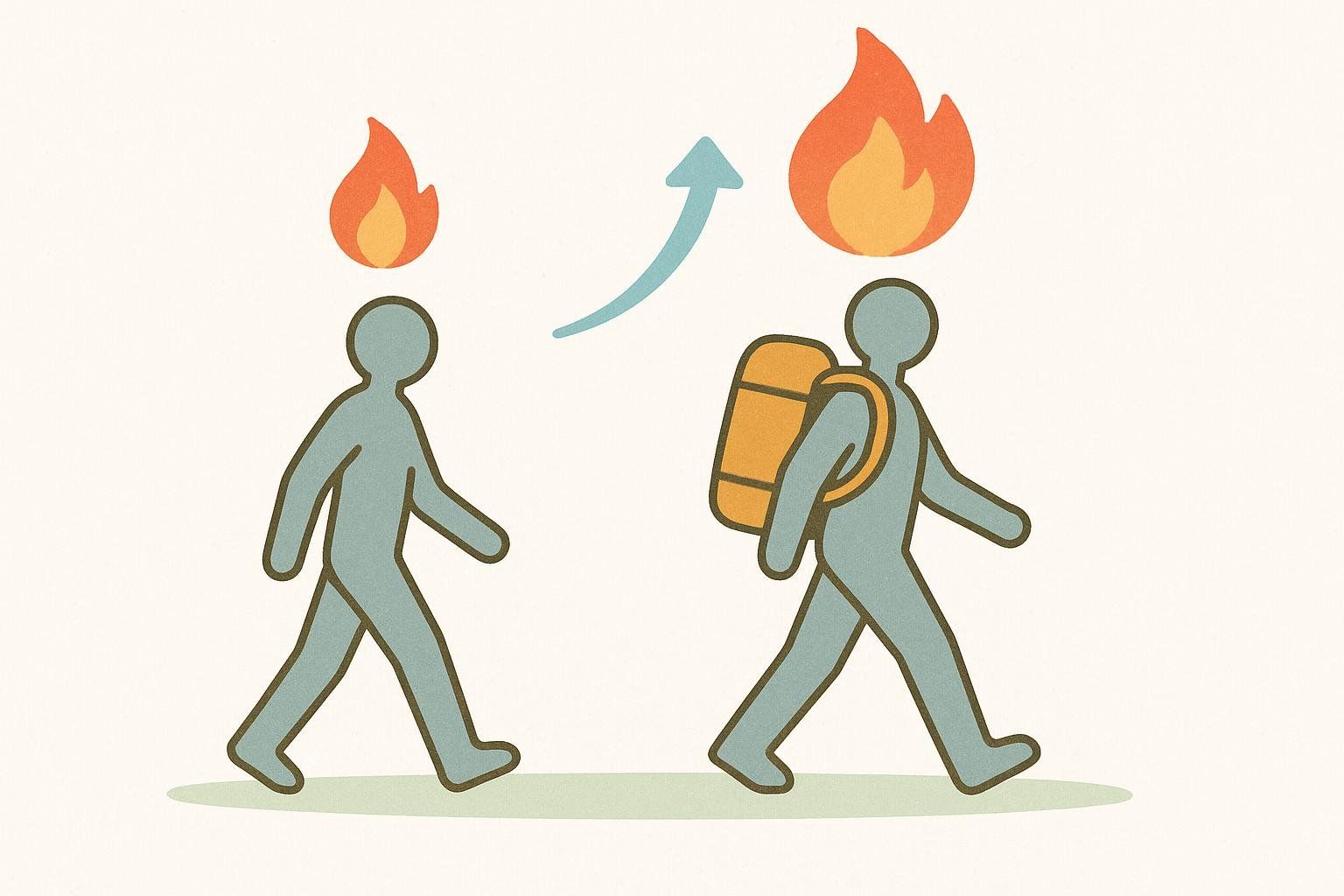
3. Builds Functional Strength
The pack’s downward pull forces your core, glutes, and postural muscles to stabilize each step. Think of it as carrying groceries—but for miles. Downward force is the fundamentally unique element: Whereas an Ironman is also based on a U.S Navy-developed exercise, it includes very different and lower impact events (cycling and swimming being low impact). Rucking is very high impact on joints but can result in improved bone density if done safely.
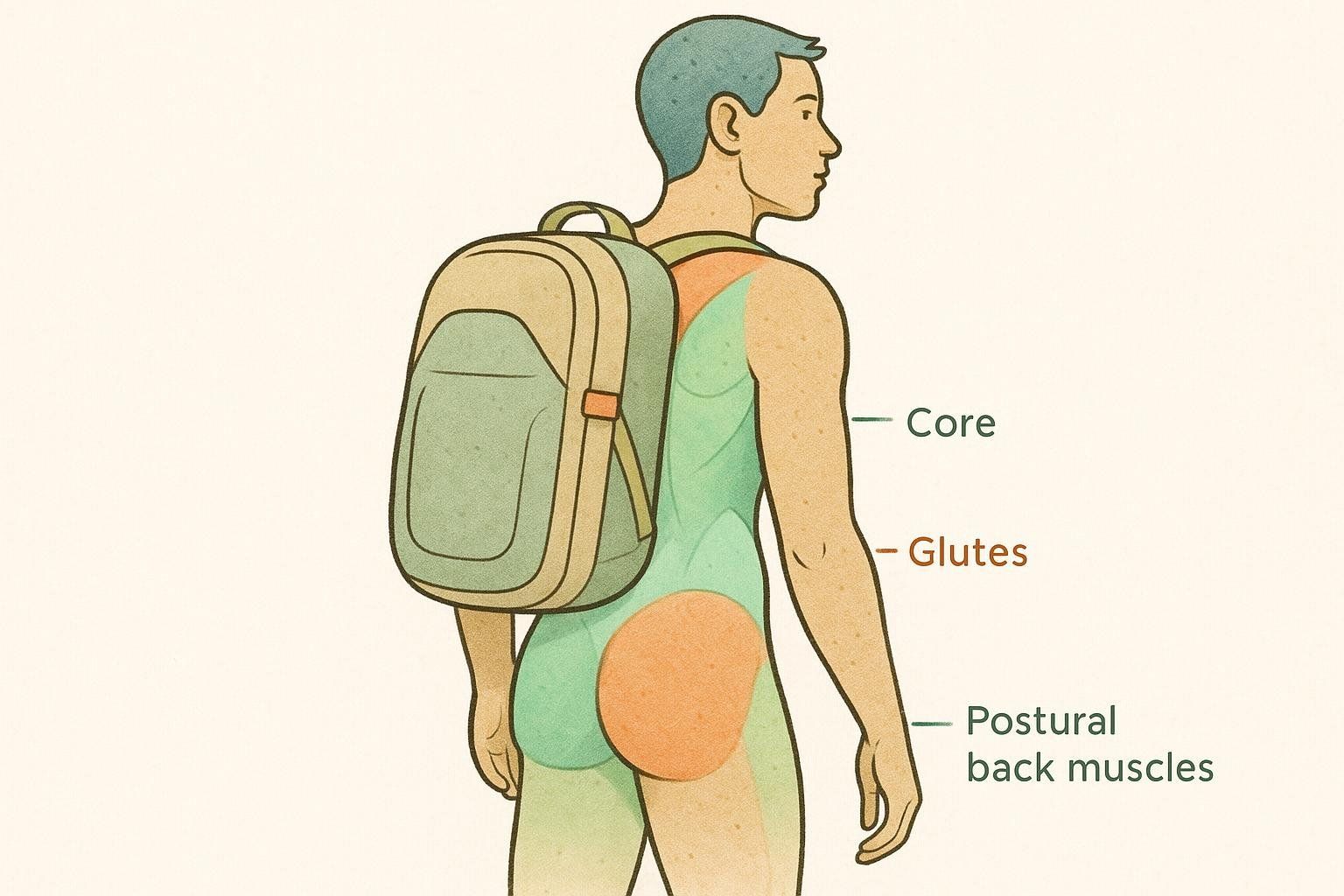
4. Supports Bone Health
A 5-year study in post-menopausal women found that weighted-vest walking maintained hip bone mineral density while a non-weighted group lost bone mass, according to a PubMed study. Because rucking is also a weight-bearing activity—essentially walking with external load—it aligns with the general exercise principle that added mechanical stress stimulates bone remodeling.
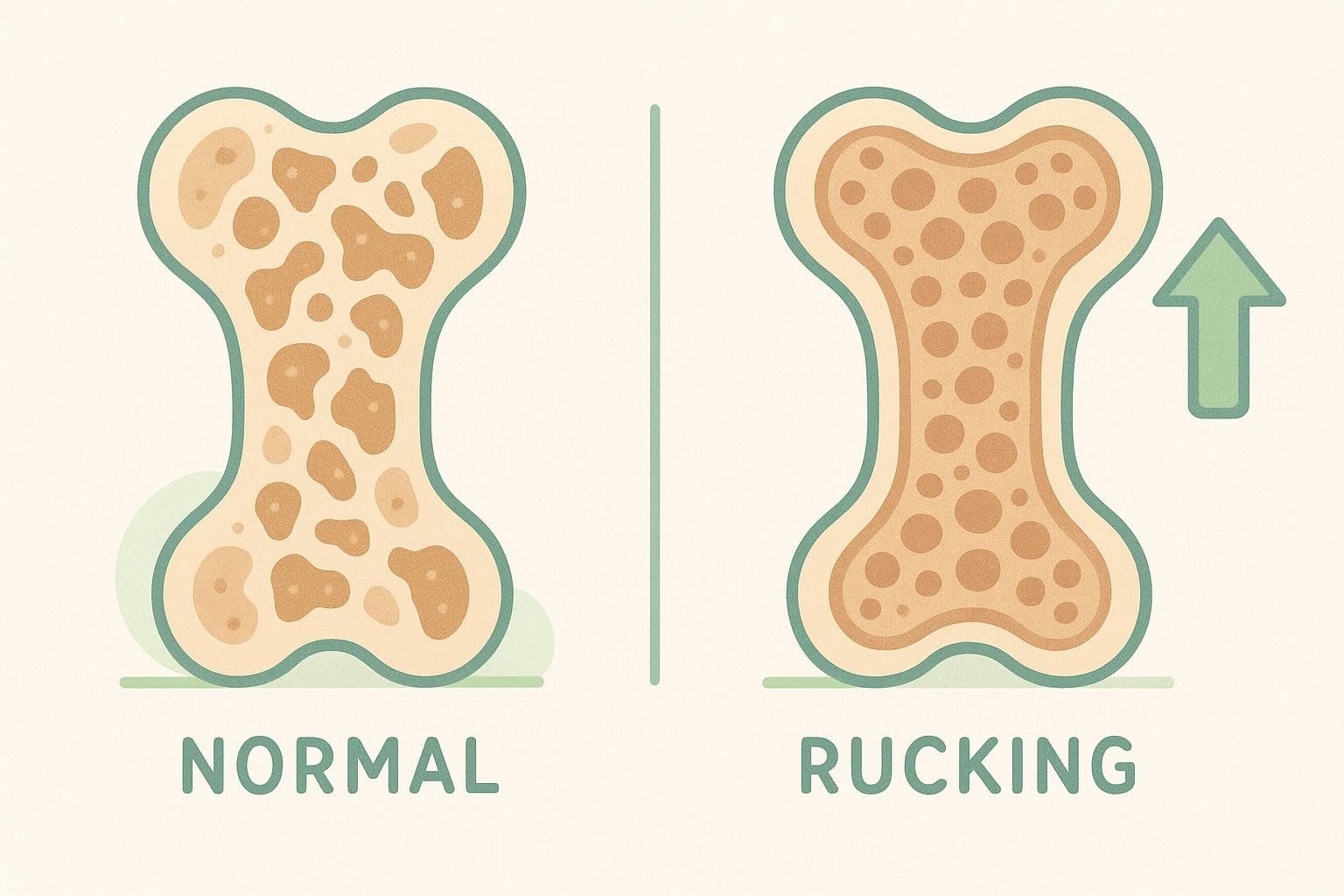
Want objective proof your bones are getting stronger? A BodySpec DEXA scan tracks bone density to the gram—learn how in our DEXA Scan: Body Fat, Muscle, and Bone Density Testing guide.
5. Joint-Friendly Cardio
Because you’re still walking, impact forces are far lower than running—perfect for people managing knee or ankle sensitivities.
6. Infinitely Scalable
Increase weight, distance, pace—or the steepness of your route. You control the dial.
How Many Calories Does Rucking Burn?
Several variables influence calorie burn: body weight, pack weight, pace, and terrain. The table below uses conservative estimates from GORUCK’s calculator for a 180-lb (82 kg) person on flat ground.
| Pack Weight | Pace (min/mi) | Calories Burned per Hour |
|---|---|---|
| 0 lb (walk) | 17 | ~300 |
| 20 lb | 17 | ~450 |
| 30 lb | 17 | ~540 |
| 30 lb | 15 | ~620 |
Using the GORUCK calculator, estimates suggest that heading uphill or carrying about 30 % of your body weight can push energy expenditure above 700 calories per hour.
Gear Essentials: Start With What You Have
- Backpack or Rucksack – Any sturdy day-pack works. Specialized rucksacks add comfort but are optional.
- Weight – Dumbbells, books, water jugs, rice bags—use whatever fits. Begin with 10 lb or roughly 10 % of body weight—whichever is lighter.
- Footwear – Comfortable walking or trail shoes. Boots are optional; comfort trumps aesthetics.
- Socks & Blister Kit – Wool or synthetic socks plus moleskin can save your feet on longer outings.
- Hydration – The American College of Sports Medicine recommends drinking 0.4–0.8 L per hour during endurance exercise, according to the ACSM hydration guidelines.
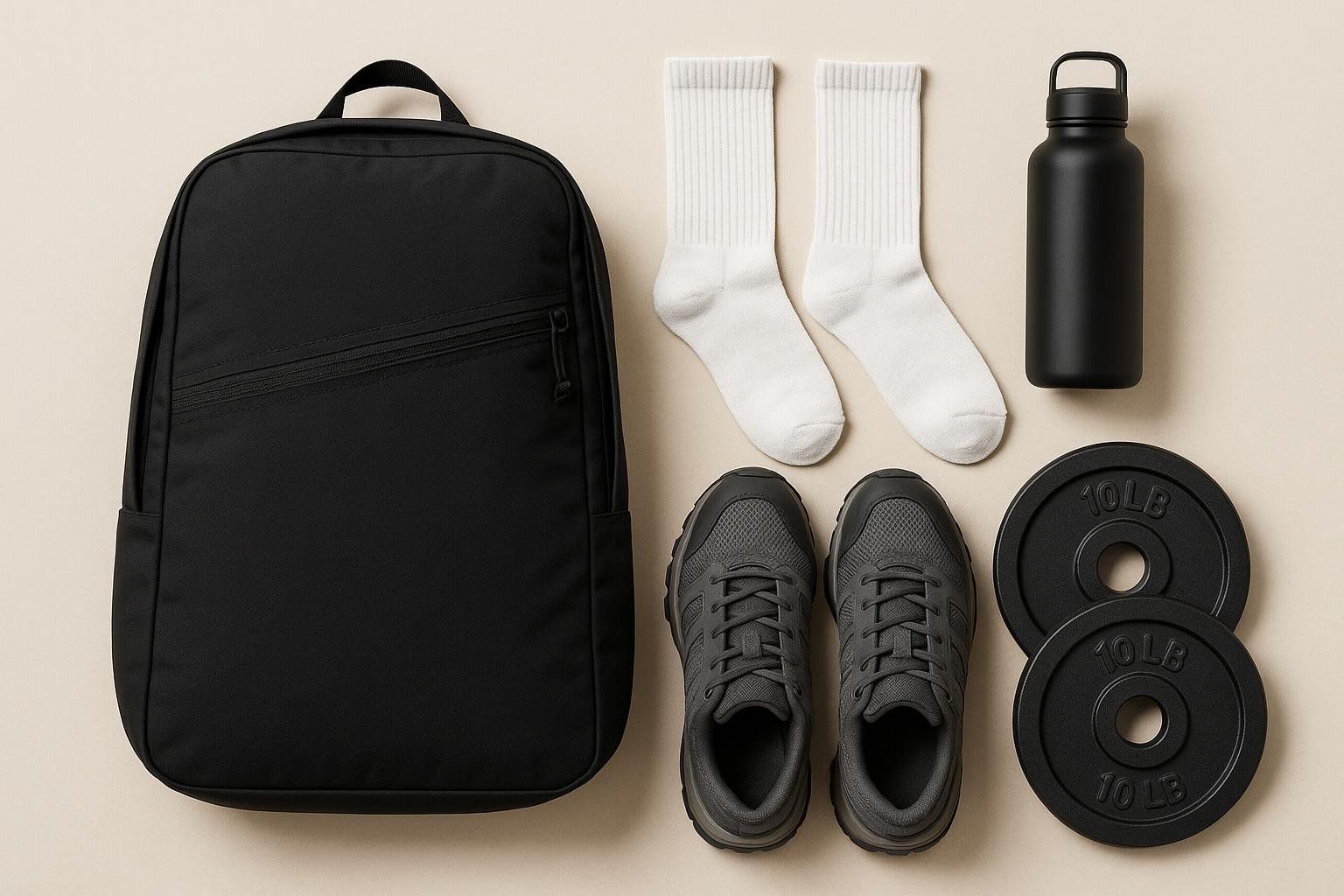
Quick-Start Checklist
- Grab a backpack
- Add 5–10 lb of household items
- Walk 15–20 minutes — that’s it!
A 4-Week Beginner Rucking Program
Aim for 3 rucks per week on non-consecutive days. Keep the pace conversational; you should be able to talk in full sentences.
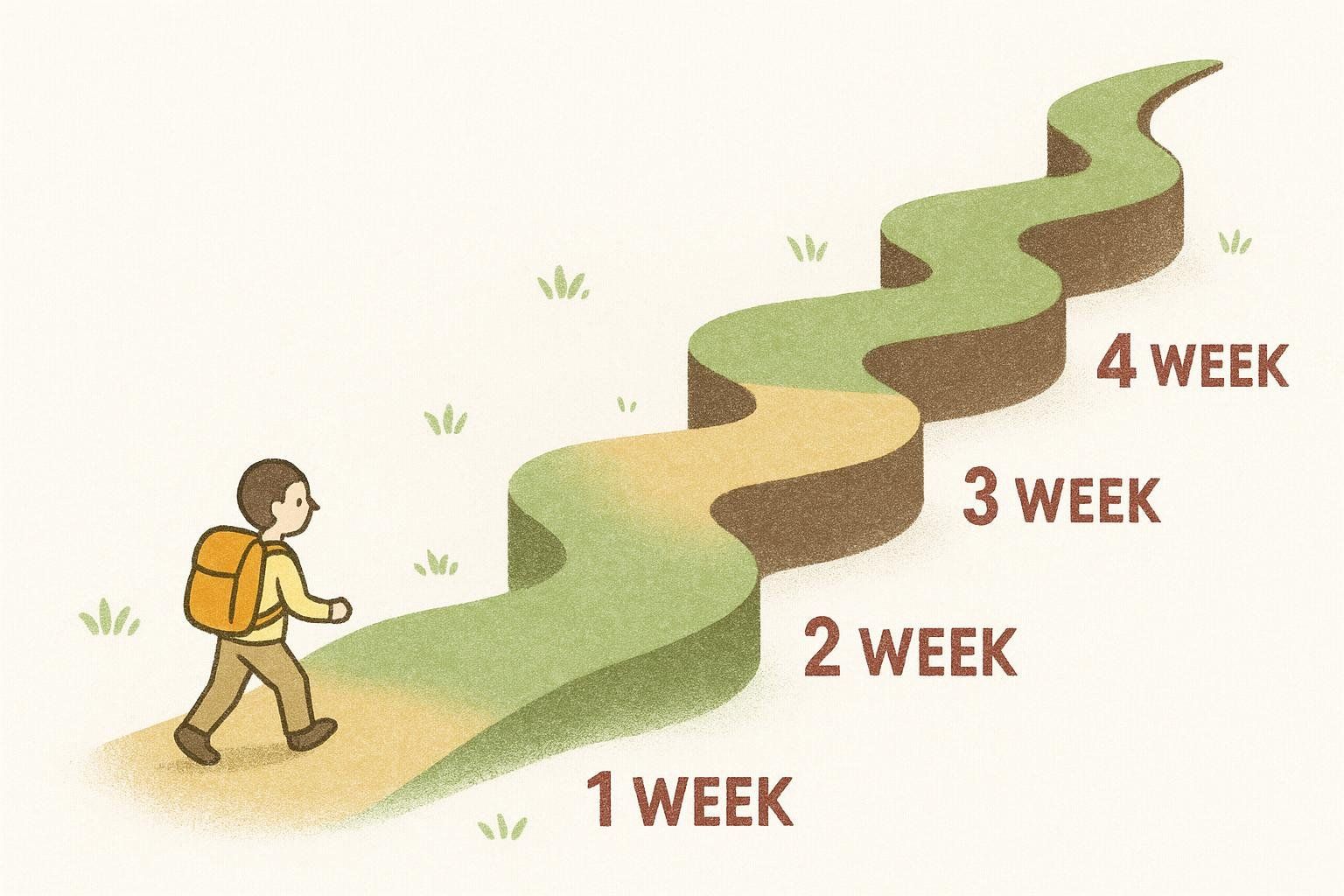
| Week | Distance | Pack Weight* | Goal Pace |
|---|---|---|---|
| Prep | 30-min walk, no weight | — | 18–20 min/mi |
| 1 | 2 mi | 5–10 lb | ≤18 min/mi |
| 2 | 2.5 mi | 12–15 lb | ≤18 min/mi |
| 3 | 3 mi | 15 lb | ≤17 min/mi |
| 4 | 3.5 mi | 20 lb | ≤17 min/mi |
*Select a weight that is roughly 10 % of your body weight or 10 lb—whichever is lighter. If you’re brand-new to exercise, start closer to 5 lb.
Progressing Like a Pro
Simple Ways to Scale Difficulty
- Add Weight: Increase by no more than 10 % per week.
- Cover More Ground: Extend distance before speeding up.
- Pick Tougher Terrain: Hills and trails boost intensity without adding load.
- Speed It Up: Shorten your mile pace once weight and distance are easy.
Tactical Benchmarks
Certain U.S. Army fitness standards—such as the Ranger Assessment 12-mile road march—require covering 12 mi in under 3 hours with a 35-lb load (see U.S. Army Ranger School prerequisites). Consider this an aspirational civilian goal after several months of steady training.
Sample Advanced Session
- Warm-up: 5-minute unloaded walk
- 4-mi ruck @ 15 min/mi pace, 30 lb
- Every mile: 20 body-weight squats + 10 push-ups
- Cool-down: 5-minute easy walk, stretching
Staying Safe & Preventing Injury
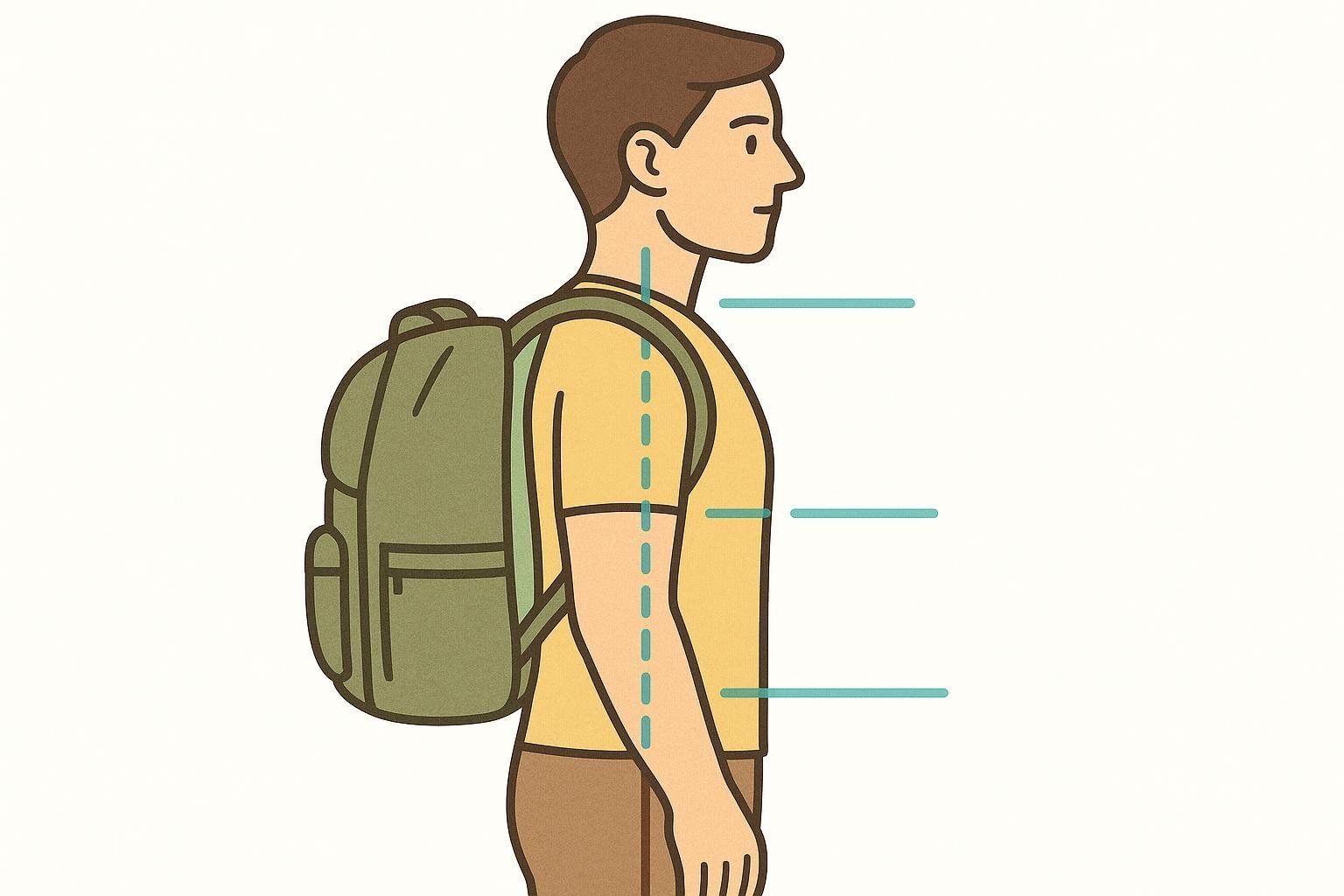
- Posture checklist: chin neutral, shoulders back, rib cage over hips.
- Load limits: U.S. Army guidelines (Field Manual FM 21-18) note that conditioned soldiers should carry no more than one-third of their body weight; beginners should stay well below that threshold.
- Packing tip: Keep weight high and tight against your shoulders to maintain a stable center of gravity and reduce lower-back strain.
- Listen to hotspots: Sore shoulders? Add padding. Foot rub? Re-lace shoes.
- Recovery matters: Schedule at least one full rest day weekly. For science-backed tips, see The Importance of Rest Days and Active Recovery.
Tracking Your Ruck Results with BodySpec
Rucking can improve lean mass in the legs and core while stimulating bone density. A BodySpec DEXA scan quantifies these changes, including regional muscle gains and bone density shifts. For lean mass changes, scan every 8–12 weeks to validate progress and fine-tune your program. Bone density improvements should be monitored over 6–12 months, as these changes occur more gradually.
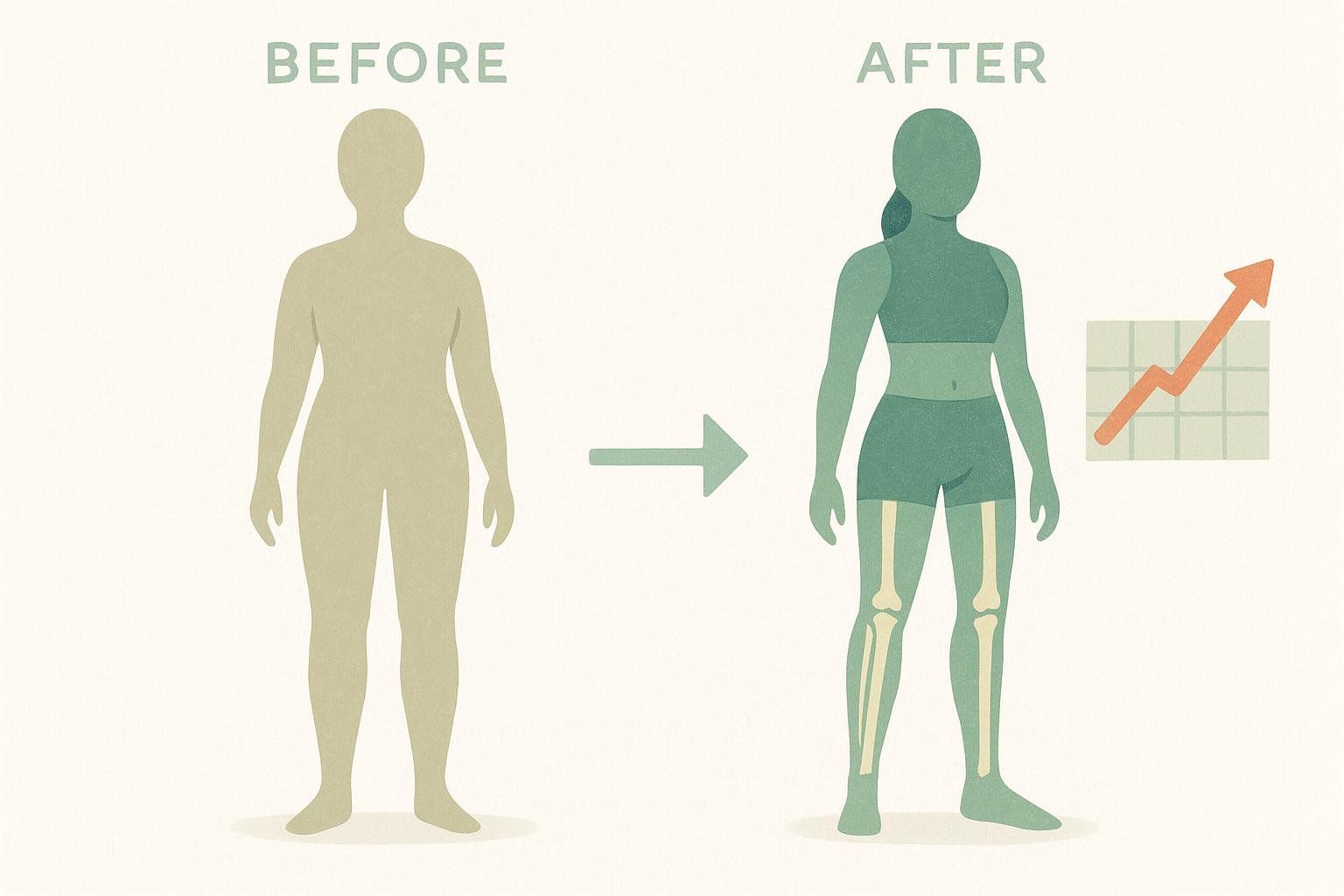
- See how added weight affects lean vs. fat mass
- Monitor visceral fat as cardio fitness climbs
- Verify bone density improvements if you’re rucking to fight osteoporosis
Book a mobile van or clinic appointment in minutes at BodySpec.com.
Rucking FAQ
How heavy should my first ruck be?
Start with 10 lb or roughly 10 % of your body weight—whichever is lighter. Even 5 lb is fine if you’re new to exercise.
Can I ruck every day?
Not recommended. Muscles and connective tissue need 24–48 hours to recover.
Is a weighted vest as good as a backpack?
A vest keeps load centered but limits how heavy you can go. Both work; choose what feels comfortable.
Does rucking hurt your knees?
When progressed gradually and with proper footwear, impact forces remain similar to walking.
Do I need special shoes?
No, but trail or hiking shoes with firm midsoles improve stability—especially off-road.
What’s a good heart-rate zone?
Aim for 60–75 % of your max heart rate; you should be able to speak in full sentences.
Ready to Ruck?
Grab a backpack, toss in a few books, and step outside. You control the challenge—add a little more weight or distance whenever you’re ready. Track your body’s response with periodic BodySpec DEXA scans, progress gradually, and discover an efficient workout you can do almost anywhere.
